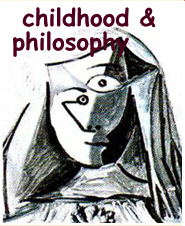silence and music: questions about aesthetics
Keywords:
enseñanza fundamental, estética, naturaleza de la música, comunidad de investigación filosóficaAbstract
This article describes a philosophy session with ten-year-old students centered around aesthetics, and in particular on questions about the meaning of music. The students explore the nature of music and art, including questions about what makes something music, artist intention, and the relation of art and the expression of emotion. The session involves a performance of John Cage’s work 4’ 33” and the way in which the performance can inspire a conversation with young people about philosophy of music. The article depicts such a conversation in a fifth grade classroom. The students examine whether silence can be music, whether art must express emotion, and whether it is the external properties of a work or our experience of it that define it as music. Music is deeply important to most people, and yet it evokes some of the most challenging questions of aesthetics. Discussing these questions can serve to illustrate some of the ways in which philosophical enigmas lie behind many of our most ordinary experiences. The surprising experience of attending a performance of Cage’s work, combined with being outside of the classroom for a special event and the relevance of music in the students’ lives, create a powerful environment for philosophical inquiry. The students are able to grasp immediately the complex issues raised by the work, and the resulting search for meaning within the philosophical community of inquiry can be a transformative moment. Key words: elementary school aesthetics; nature of music; philosophical community of inquiryDownloads
Download data is not yet available.
Downloads
Published
2010-07-18
How to Cite
LONE, Jana mohr. silence and music: questions about aesthetics. childhood & philosophy, Rio de Janeiro, v. 6, n. 11, p. pp. 127–136, 2010. Disponível em: https://www.e-publicacoes.uerj.br/childhood/article/view/20561. Acesso em: 12 may. 2025.
Issue
Section
experiences




